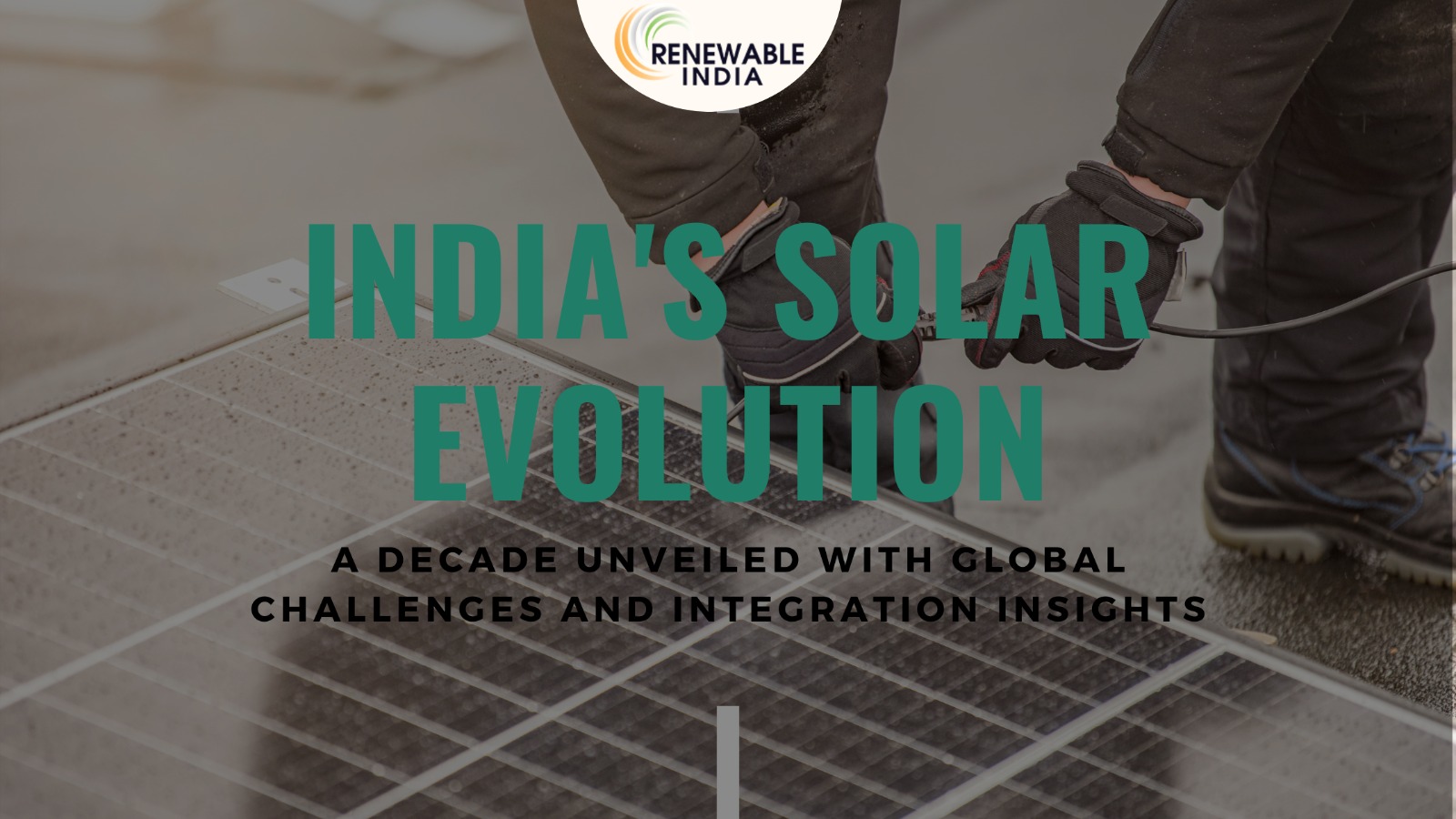
Solar photovoltaic (PV) panels, which use solar energy to create clean, renewable electricity, have become a revolutionary force in the world of energy. Over the past ten years, India’s adventure with solar photovoltaic panels has advanced significantly, all credit goes to increased government assistance, policy changes, and a dedication to lowering reliance on conventional energy sources.
Solar PV panels, sometimes referred to as solar cells, are apparatuses that use the photovoltaic effect to turn sunlight into electricity. Solar panels serve as indispensable components in generating solar power by capturing sunlight and converting it seamlessly into direct current (DC) electricity.. The solar energy industry in India has grown significantly, with a deliberate effort to boost local manufacturing capabilities and lessen dependency on imports.
China has been the world leader in solar module manufacture over the past 12 years, with about 70% of the market in 2022. Acknowledging the weaknesses linked to excessive reliance on a solitary manufacturing market, some nations—including India—have implemented the “China+1” approach. The objective of this approach is to reduce potential disruptions to the solar PV supply chain and diversify the sourcing channels.
To strengthen its domestic manufacturing capacity and lessen its need for Chinese imports, India in particular has taken proactive steps. The Approved List of Models and Manufacturers, safeguard duties, and basic customs duties are just a few of the initiatives that have been implemented to foster the development of the domestic solar PV industry.
India’s comprehensive policy strategy demonstrates the country’s commitment to building a strong solar PV manufacturing environment. The implementation of the production-linked incentive (PLI) programme, which will cost roughly US$3.2 billion in two installments, has greatly accelerated the growth of solar module production facilities.
A notable accomplishment has been made possible by this coordinated effort, as nameplate capacity increased significantly, reaching 6.6GW of cells and 38GW of modules in 2023.
Notwithstanding the encouraging trend, difficulties still exist. The solar PV manufacturing industry in India is confronted with several challenges, including an excessive dependence on imported upstream components such as polysilicon, competitive cost dynamics with China, and a deficiency of experienced labor to operate sophisticated gear.
India has seen a rise in exports as it improves its capacity to manufacture solar photovoltaic cells; in the fiscal year 2023, shipments exceeded prior levels by a factor of five. 93% of India’s solar PV exports go to the US, making it the country’s top destination.
However, in order to maintain this momentum, India needs to diversify its export markets as the United States and the European Union also increase their manufacturing capacities.
Indian manufacturers continue to face a tremendous struggle in trying to compete with China on cost. India’s cost competitiveness is hampered by the cost differentials, which are mostly caused by economies of scale, supply chain integration, and cheaper energy costs in China.
These issues have been addressed and a competitive manufacturing environment has been fostered thanks to the backing of the Indian government, particularly through the PLI scheme.
Loom Solar is one of the top solar panel manufacturers in India. They manufacture lithium batteries, solar panels, and solar inverters for residential, commercial, and industrial use. They provide facilities like EMI options, PAN India delivery, and product demonstrations in your city.
At this critical juncture, India’s solar PV manufacturing industry is expected to grow significantly and become more integrated into the global supply chain.
The Approved List of Models & Manufacturers (ALMM) was recently postponed by the government until March 2024, indicating a careful balancing act between developer requirements and PV manufacturer support.
Maintaining policy consistency going ahead is essential to boosting investor confidence and long-term growth.
The demand for residential solar panel systems is rising in India as the world moves closer to sustainable energy sources. The installation cost is a major factor that households will need to consider in 2024 when deciding whether to switch to solar power.
It’s important to understand the system’s basic components in order to appreciate the complexities around home solar panel system pricing. The system’s components—solar panels, inverters, mounting frameworks, and optional batteries—all add to the total cost.
The kind and efficiency of solar panels, system capacity, inverter type, mounting structures, component quality, and government incentives are some of the factors that affect costs.
As per the previous year, the average installation cost in India ranges from INR 1.5 lakh to INR 5 lakh, encompassing solar panels, inverters, mounting structures, optional batteries, quality differentials, government subsidies, and installation charges. This breakdown provides homeowners with valuable insights into the investment required for embracing solar energy and achieving energy independence.
In the radiant saga of India’s solar evolution, the transformative power of photovoltaic panels emerges as a beacon for a sustainable future. Ten years of bold policy and unwavering dedication have made India a major player in the solar industry worldwide.
The rise in solar exports and the careful balancing of policies, notwithstanding cost issues, indicate an industry that is ready for greatness. The key to future success as the country moves towards energy independence is constant policy consistency. India’s solar odyssey illuminates the way to a more promising, sustainable energy future and is more than just a home adventure. It also holds the possibility of global integration.
Leave a Reply